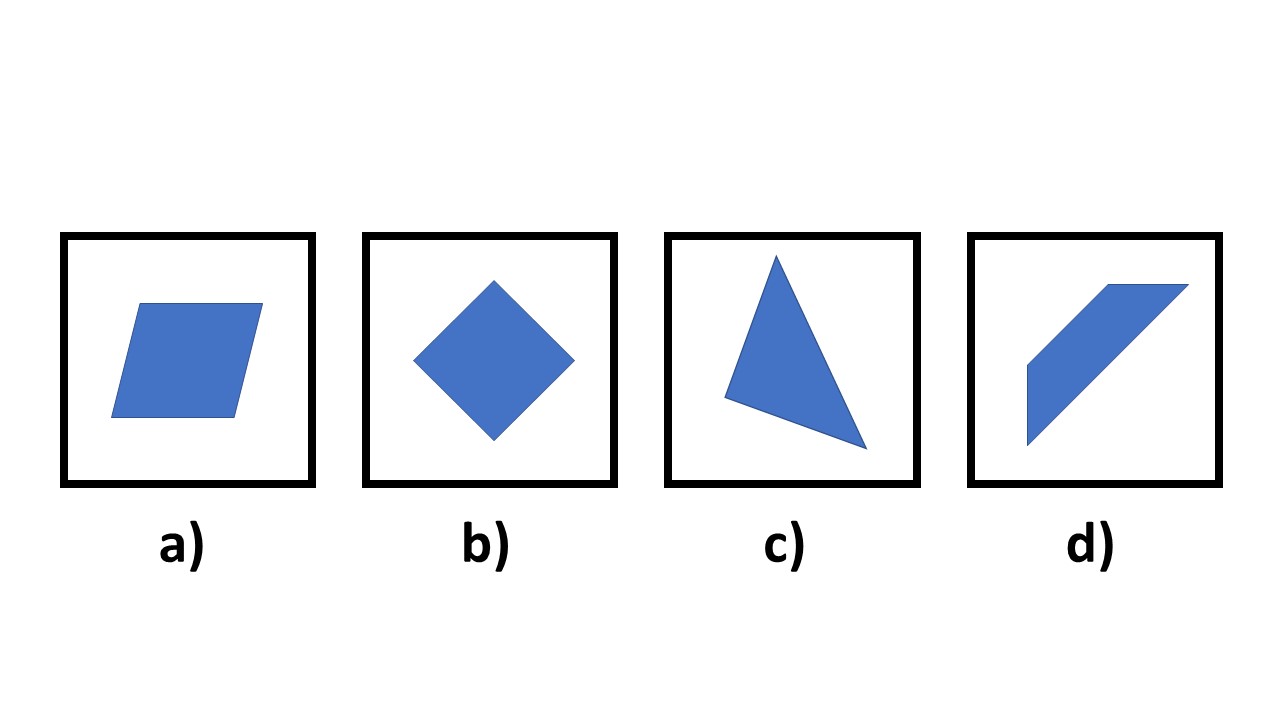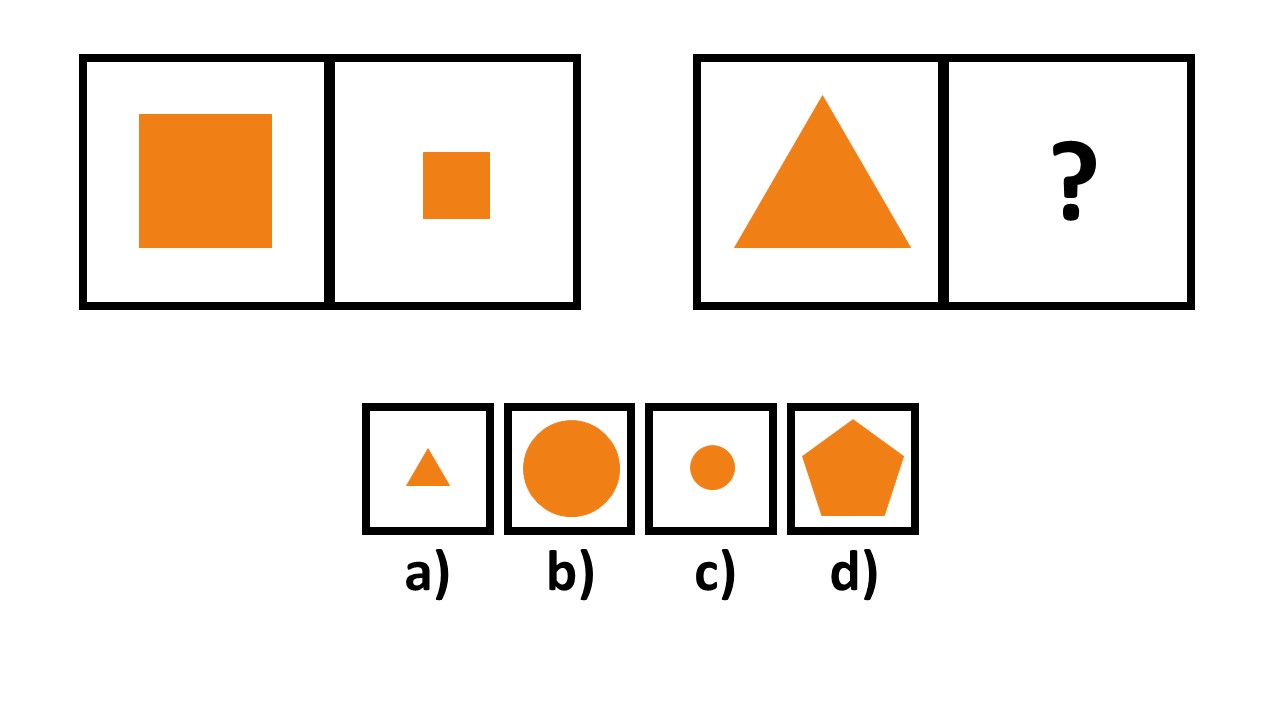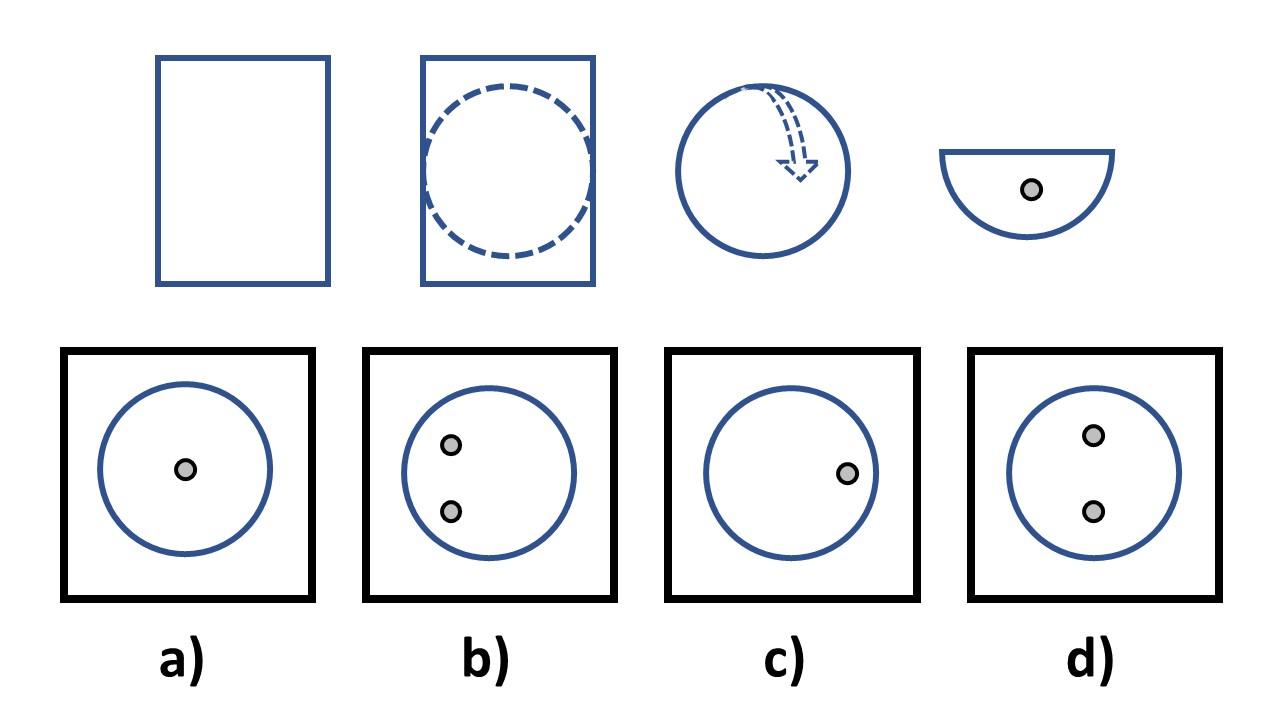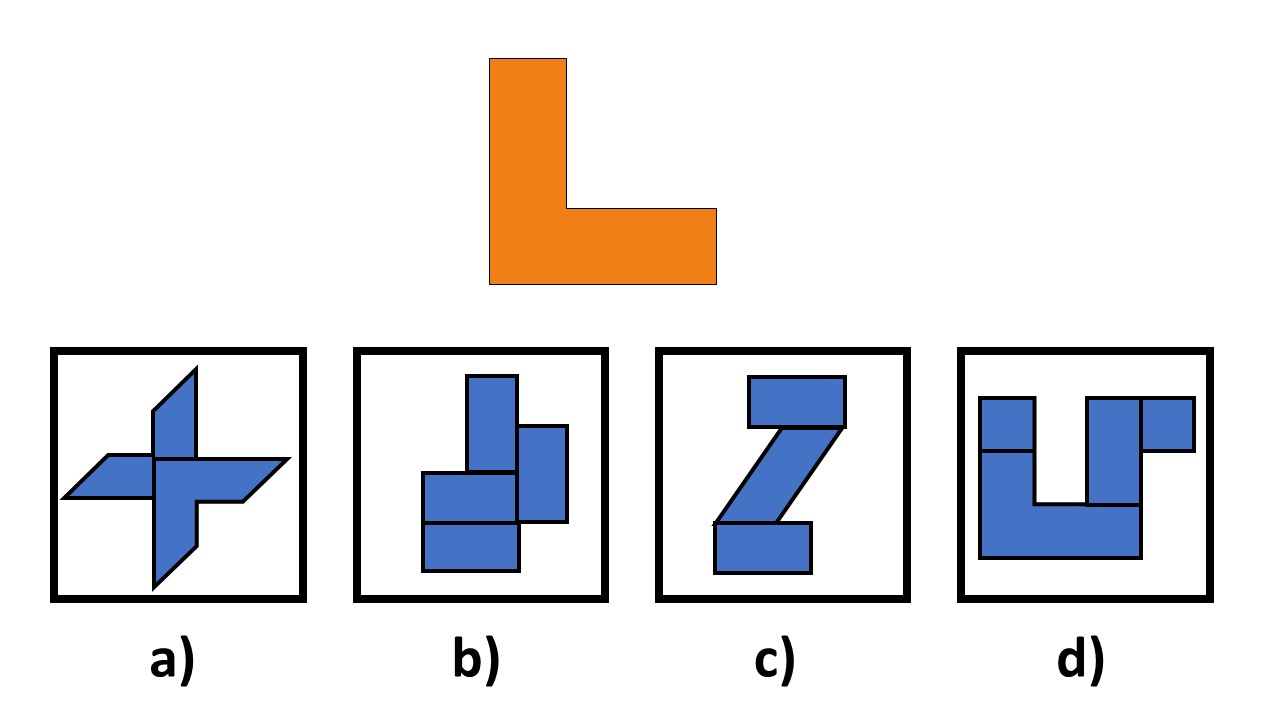A Full 2025 Guide to the CAT4 Test
Updated May 31, 2024
- A List of CAT4 Tests Available for Practice in 2025
- What Is The CAT4 Test?
- Format and Structure of the CAT 4
- CAT 4 Test Levels in Detail
empty
empty
empty
empty
empty
empty
empty
- What Are the Sections in the CAT4 Assessment?
- CAT4 Test – Part 1
empty
empty
- CAT4 Test – Part 2
empty
empty
empty
- CAT4 Test – Part 3
empty
empty
empty
- CAT4 Practice Test Tips 2025
- Understanding the CAT4 Test Scores
empty
empty
empty
- What Are the Timings of the CAT4 Test?
- How Long Does the CAT 4 Take?
- How Long Should Your Child Spend on Each Section of the CAT4?
- Frequently Asked Questions
- Final Thoughts
A List of CAT4 Tests Available for Practice in 2025
- CAT4 Test Practice for Year 4 (Level A)
- CAT4 Test Practice for Year 5 (Level B)
- CAT4 Test Practice for Year 6 (Level C)
- CAT4 Test Practice for Year 7 (Level D)
- CAT4 Test Practice for Year 8 (Level E)
- CAT4 Test Practice for Year 9 & Year 10 (Level F)
- CAT4 Test Practice for Year 11+ (Level G)
What Is The CAT4 Test?
The CAT4 (Cognitive Abilities Test), developed by GL Assessment, is used by 50% of secondary schools in the UK and Ireland, and many primary schools.
The schools use the CAT4 test to understand the abilities and academic potential of students aged from six to 17 years old, so that teachers can support them and help them develop.
These ability tests assess two different areas:
- What the student’s academic abilities are now
- How their abilities are likely to develop in their educational future
It can also help to group children together depending on their learning preference, identify areas for improvement and allow teachers to encourage students to reach their full potential.
The CAT4 exam is a diagnostic test to give a broad view of how individuals learn and highlight general strengths and weaknesses.
These tests can seem overwhelming to a child; however, reminding them that this test will help their school support them should be reassuring.
There is an opportunity to practice and prepare for the CAT4 tests, which also helps prevent them from becoming overwhelming.
The CAT4 test can be taken at different times and ages in the student’s life. It is separated into levels depending on the child’s age and school year.
The level increases in difficulty as the age increases.
- Aged six to seven (Level X)
- Aged seven to eight (Level Y)
- Aged eight to nine (Level A)
- Aged nine to 10 (Level B)
- Aged 10 to 11 (Level C)
- Aged 11 to 12 (Level D)
- Aged 12 to 13 (Level E)
- Aged 13 to 15 (Level F)
- Aged 15 to 17+ (Level G)
It can help the pupil think about future career paths too.
In a slightly older child, the CAT4 test may show they learn better using graphs and charts instead of written explanations.
A child taking their Key Stage 2 SATS may also take a CAT4 test.
The results of all tests are then combined to assess the pupil’s level at that time and could help indicate which GCSEs would be better to study.
Format and Structure of the CAT 4
The Cognitive Abilities Test (CAT4) is designed to assess a student's cognitive abilities in different areas.
The CAT4 test measures four main cognitive areas:
- Verbal Reasoning: This section assesses the student's ability to understand and manipulate language. It includes tasks such as completing analogies, identifying word relationships and solving verbal puzzles.
- Non-Verbal Reasoning: This section evaluates the student's ability to recognize patterns, solve visual puzzles and reason using non-verbal information. Tasks may involve identifying sequences, completing matrices and solving spatial puzzles.
- Quantitative Reasoning: This section measures the student's mathematical reasoning and problem-solving skills. It includes tasks such as solving mathematical problems, identifying number patterns and working with numerical data.
- Spatial Reasoning: This section assesses the student's ability to think and reason using visual and spatial information. Tasks may involve manipulating shapes, mentally rotating objects and solving visual puzzles.
The CAT4 test is computerized, and the questions are adaptive.
This means that the difficulty level of the questions adjusts based on the student's performance.
The test aims to provide a comprehensive profile of a student's cognitive strengths and weaknesses across different areas.
CAT 4 Test Levels in Detail
CAT 4 Level A
Level A CAT4 is used for children aged between 7.5 and 10 years old and is usually administered in Year 4 in England, or Primary 5 in Scotland.
There are four types of questions, separated into three parts in this assessment, and each part needs to be completed before moving on to the next.
Question types are the same throughout levels A–G.
Part One is 20 minutes long and consists of figure classification and figure matrices, with 24 questions to be answered in 10 minutes for each.
Part Two is 26 minutes long, in three sections: verbal classification and verbal analogies, with 24 questions in 8 minutes each, and then number analogies which have 18 questions that need to be answered in 10 minutes.
Part Three is also 26 minutes long. There are 18 number series questions that need to be answered in eight minutes, 18 figure analysis questions that need to be answered in nine minutes, and 18 figure recognition questions with a time limit of nine minutes.
Practice Cat4 Level A with TestHQ
CAT 4 Level B
The Level B CAT4 test is aimed at students in Year 5, which covers students that are aged 8.5 to 11.
As with the other tests in the CAT4 battery (Levels A to G), the Level B test consists of four parts, each with two subsections.
The test itself is delivered in three parts, each taking between 20 and 28 minutes to complete.
The first part has 48 questions split equally over figure classification and figure matrices, with 10 minutes to complete each.
The second part consists of three distinct types of questions. The first two are based on verbal questions, 24 questions on verbal classification and 24 on verbal analogies, with eight minutes spent on each. The last subsection in this part of the test is number analogies, which has 18 questions to be answered in 10 minutes.
The last part of this test has 18 questions on number series, figure analysis and figure recognition. The number series question has an eight-minute time limit, while the last two subsections have a nine-minute time limit.
Practice Cat4 Level B with TestHQ
CAT 4 Level C
The CAT4 Level C test is designed for students in Year 6 (or Primary 7 in Scotland), making it suitable for use in testing children aged between 9.5 and 12.
As with the Level A to G tests in the CAT4, the assessment consists of four different question types – spatial reasoning, verbal reasoning, non-verbal reasoning and quantitative reasoning. Each of these question areas is broken into two subsections.
The test itself is delivered in three parts.
The first part consists of the non-verbal reasoning questions, with 48 questions and a 20-minute time limit split equally between figure classification and figure matrices.
The second part of the test has three subsections. Both the verbal classification and the verbal analogies subsection have 24 questions that need to be answered in 10 minutes, while the number analogies subsection has just 18 questions with a 10-minute time limit.
The final part of the assessment consists of 18 number series questions to be answered in eight minutes, and 36 questions to be answered in 18 minutes, split equally between figure analysis and figure recognition.
Practice Cat4 Level C with TestHQ
CAT 4 Level D
For children in Year 7 (or Secondary 1 in Scotland), the Level D CAT4 is used. With the same structure as tests for Level A-G, there are four types of questions separated into three parts, with each part taking between 20 and 26 minutes to complete.
As the levels progress, the difficulty increases to match the age of the child taking the assessment.
Part One has figure classification and figure matrices, with 48 questions in total and taking 20 minutes to complete.
In Part Two, there are three types of question – verbal classification and verbal analogies, both with 24 questions that need to be answered in eight minutes. This is followed by number analogies, which has 18 questions and a 10-minute time limit.
The last section is Part Three, which consists of 18 number series questions to be answered in eight minutes, and then figure analysis and figure recognition that both have 18 questions to be answered in nine minutes.
Practice Cat4 Level D with TestHQ
CAT 4 Level E
Aimed at students aged between 11.5 and 14, the CAT4 Level E is usually administered in Year 8 (Secondary 2 in Scotland).
As with previous levels, the difficulty of the questions will increase to match the age of the child, but the basic structure and length of the assessment are the same.
Split into three parts, the questions cover verbal reasoning, quantitative reasoning, non-verbal reasoning, and spatial ability.
Part One has a 20-minute time limit and 48 questions, spilt equally between figure classification and figure matrices.
Part Two covers both verbal reasoning and part of the quantitative reasoning questions, with 24 questions in eight minutes each for verbal classification and verbal analogies, and then 10 minutes to answer 18 questions on number analogies.
Part Three is the second half of quantitative reasoning questions (18 questions in eight minutes on number series) and the spatial ability battery, which consists of figure analysis and figure recognition, both having 18 questions that need to be answered in nine minutes.
Practice Cat4 Level E with TestHQ
CAT 4 Level F
For students in Year 9 and Year 10, or Secondary 3 and 4 in Scotland, the Level F CAT4 test is used as a standard admission tool for gifted programs or exclusive schools.
In the Level F test, students aged between 12 and 15 are faced with a three-part test following the same structure as the other tests (Level A to G).
The first part is figure classification and figure matrices, each with 24 questions to be answered in 10 minutes.
The second part of the assessment lasts 28 minutes. There are 24 verbal classification questions and 24 verbal analogies questions, each to be answered in eight minutes. The last subsection of the assessment is number analogies, with 18 questions that need to be answered in 10 minutes.
For the last part of the test, there are three subsections. The first is the number series questions. There are 18 that need to be answered in eight minutes.
Following this, there are 18 questions on figure analysis and 18 questions on figure recognition, both with a nine-minute time limit.
Practice Cat4 Level F with TestHQ
CAT 4 Level G
For students in Year 11+ or Secondary 5-6 in Scotland, the Level G assessment is designed to challenge students as they prepare or leave the secondary education system and choose their further education focus.
Like the earlier tests, the assessment is split into three distinct parts and lasts a total of 78 minutes, although breaks can be taken between parts.
Part One consists of non-verbal reasoning questions, with figure classification and figure matrices, with a total time of 20 minutes and 48 questions.
Part Two has three types of question. The first two are related to verbal reasoning, with verbal classification and verbal analogies having 24 questions each to be answered in a total of 16 minutes. The last section is number analogies, and students have 10 minutes to answer 18 questions.
Part Three begins with 18 number series questions to be answered in eight minutes, and then two sets of questions on spatial ability (figure analysis and figure recognition), lasting 18 minutes in total with 36 questions split equally in that time.
Practice Cat4 Level G with TestHQ
What Are the Sections in the CAT4 Assessment?
The CAT4 comes in three sections:
- Verbal
- Non-verbal
- Spatial reasoning and quantitative
Each part has multiple-choice questions.
The sections, which each have subsections, must be answered within 45 minutes, meaning the total time for the CAT4 is 2 hours and 15 minutes.
Students who have dyslexia or special learning needs may have extra time to answer.
- Verbal – This shows how the student communicates through words and the English language and will be used to assess their understanding and learning of subjects such as English literature and history.
- Non-verbal – This is the opposite of verbal and shows how the student interprets diagrams, charts, numbers and images. It is helpful for subjects such as geography, IT, maths and science.
- Quantitative – This examines the relationship between sequences for analytics and can be used to assess knowledge of maths as well as science and project-based topics.
- Spatial – This section helps the school and student to assess their deducing skills. By being provided with data, the student will show how they come to an inevitable conclusion. Again, this is good for help with maths, as well as English and technology.
These sections are formatted into three different parts, with each of the four main areas being broken down into smaller sections.
Practice CAT4 Test with TestHQ
If you want 12-month access to all the practice resources for this test, our partner TestHQ offers a Premium Membership.
Premium Memebership gives you access to all the TestHQ resources for the next 12 months. You will also get two separate accounts, which can be very helpful if you have two children preparing for their tests.
Get a Premium Membership with 12-month access
CAT4 Test – Part 1
Figure Classification
The student is shown three shapes or figures to look at and must work out how they are connected.

Look at these four shapes – one of them is different to the other three in some way, please choose which one it is.

Which shape goes next in the box?

CAT4 Test – Part 2
Verbal Classification
In this section, the student needs to identify the pattern in words.
Three, twenty-six, fourteen.
Which word fits the pattern of the words above?
a) Yellow
b) Seven
c) Number
d) Triangle
Verbal Analogies
Three words are connected somehow, and the student needs to identify which word is the connection.
England, Isle of Wight, Paris.
Which word connects the three words?
a) Countries
b) Locations
c) Capital cities
d) Places in the UK
Number Analogies
The pupil is shown two pairs of linked numbers and then a single number with its pair missing. They must guess the missing number.
10 – 20 | 20 – 30 | 30 – ?
Which number completes the pattern?
a) 40
b) 50
c) 60
d) 70
CAT4 Test – Part 3
Number Series
Using the series of numbers given, the student needs to work out the rule of the pattern and determine which number comes next.
1, 6, 36, 216, ?
Which number comes next?
a) 336
b) 1,296
c) 86
d) 706
Figure Analysis
This section is testing symmetry and shape. The student must work out what a particular shape would look like unfolded and lying down flat.

A4 paper is cut into a circle, folded in half, and a hole is punched in the middle. What will the paper look like when it is unfolded?
Which diagram shows the correct answer?

Please find the hidden shape.
CAT4 Practice Test Tips 2025
Step 1. Relax and Stay Calm
CAT4 tests are not like GCSEs or SATs because the pressure is not there to pass with a certain test score to gain a particular qualification.
However, children will naturally want to do well; but they should try not to feel too worried about them.
It is important to tell children to relax and feel confident that they will excel in their strengths, and recognise areas where they need support.
Step 2. Get With the Test
The testmakers do not advise children to do practice test papers before taking the test.
Although CAT4 practice tests are not advised, many online websites and videos show the different sections and what they consist of.
Step 3. Know What to Expect on the Day
To prepare, your child should understand the format of the test and what to expect on the day. Explain the types of questions they will be asked and what they will need to do to answer them correctly. Practice similar types of questions with them.
Prepare for the CAT4 Test with TestHQ
Understanding the CAT4 Test Scores
The CAT4 is marked using a statistical method called stanine scoring.
Stanine stands for 'standard nine', and it is a way of measuring a student's performance relative to a norm group.
Here's how the CAT4 is typically marked:
Stanine Scores
Each of the four cognitive areas assessed in the CAT4 (Verbal Reasoning, Non-Verbal Reasoning, Quantitative Reasoning and Spatial Reasoning) is assigned a stanine score ranging from 1 to 9.
A stanine score of 1–3 is considered below average, 4–6 is average and 7–9 is above average.
The scores are calculated based on a student's performance compared to a representative sample of students of the same age group who have taken the test.
Overall CAT4 Score
The CAT4 also provides an overall score that combines the results from the four cognitive areas.
This overall score is often referred to as the General Cognitive Ability (GCA) score and is reported on a stanine scale as well.
Percentile Rank
In addition to stanine scores, the CAT4 also provides percentile ranks for each cognitive area and the overall score.
The percentile rank indicates the percentage of students in the norm group that a student's performance exceeds.
For example, a percentile rank of 75 means the student performed better than 75% of the students in the norm group.
It's important to note that the interpretation of CAT4 scores should consider multiple factors, including the purpose of the test, the specific norms used and other relevant information about the student's abilities and performance.
The scores provide a snapshot of a student's cognitive abilities at a given time, but they should be considered in conjunction with other information for a comprehensive understanding of a student's strengths and weaknesses.
What Are the Timings of the CAT4 Test?
The timings of the CAT4 test may vary depending on the administering organization and the specific version of the test.
Generally, the CAT4 is an untimed test, which means there is no strict time limit for completing the entire test.
However, schools or testing centers may allocate a suggested time frame or establish their own time limits based on their needs and schedules.
How Long Does the CAT 4 Take?
The duration of the CAT4 can vary based on various factors, including the student's pace, the number of sections being administered and any additional breaks or instructions given during the test.
However, on average, the CAT4 may take approximately two to three hours to complete.
How Long Should Your Child Spend on Each Section of the CAT4?
Regarding the time allocation for each section of the CAT4, there is no specific guideline or recommended time limit for individual sections.
Since the test is untimed, students have the freedom to spend more or less time on each section based on their comfort and understanding of the questions.
It is generally advised to allocate enough time to read and understand the questions carefully and to answer them accurately.
Frequently Asked Questions
This is the profile of results that are given upon completion of the CAT4 assessment. This will include information relating to how well an individual has scored overall as well as within individual batteries of questions.
This is the section of the CAT4 test that focuses on quantitative questions. These will generally be mathematical.
There are several options to choose from when it comes to practicing for CAT4 tests. One of the most popular service providers is TestHQ.
The test is given at every level of education, with each paper tailored to the grade which will be taking it.
This means that the tests are likely to get progressively harder as students progress through education and they may find that some aspects of the assessment are more difficult than others.
As with all assessments, taking the time to prepare can help to ensure that pupils can give their best performance on the day.
Some useful tips include:
- Get enough rest ahead of the assessment to make sure you can concentrate
- Eat a balanced diet to provide sustained energy throughout the assessments
- Use practice tests to familiarise yourself with the style of questions that are likely to be found on the test
There are several websites that offer the opportunity to try practice questions and can be useful for preparing for the CAT4 assessments.
One of the most popular options for those who want to be as prepared as possible is the TestHQ website.
There is a CAT4 test for every grade of education from the age of 4 to 17.
This means that whether your child is in Kindergarten or their Senior year, there will be a test paper suited to their age and educational level.
One of the most important things to prepare a child for CAT4 testing is to ensure that they are exposed to a wide variety of text documents.
This can be in the form of fiction books, textbooks, instructions, recipes or anything else which may have words.
The more that they read and familiarise themselves with, the more capable they will be of answering comprehension questions. They will also have a wider vocabulary and a deeper understanding of concepts such as spelling.
The CAT4 is designed to be a cognitive aptitude test, rather than a test of knowledge or learning.
This doesn’t mean that your child should not study for it; in fact, preparation can help it feel less overwhelming.
There are practice tests available, although the CAT4 publishers suggest that these shouldn’t be used, but an understanding of what to expect in the relevant level will help your child feel more confident on the day.
The CAT4 test is not an intelligence test. It is designed to be a cognitive abilities assessment, used as a diagnostic tool to see where a child’s abilities are now and to predict how well they will do in the future.
It is also a way for teachers to see where a child’s strengths lie and where they might need some additional learning support.
The scoring system starts with a Standard Age Score that has an average of 100, which is about where a child would be if they were performing at the level expected for their age group (anything from 89–111 is considered average in this example).
112+ is above average for their age and 88 or below would be considered below average.
Stanines are used to show how a child has performed in comparison to other children in the same age bracket, on a scale of 1–9.
1–3 is considered below average, 4–6 is average and 7–9 is above average.
There is also a percentile ranking that demonstrates how well the child has performed in the test compared to the other test takers in the UK. A score of 70 here would demonstrate that the child has performed better than 70% of other test takers nationally.
There are three sections in the CAT4 test, each with a 45-minute time limit. The whole test takes two hours and 15 minutes to complete.
The CAT4 score is used mostly as an internal measure of development in the schools that make use of the assessment, and although there is no formal need for a CAT4 score, it can help teachers to plan lessons that will support children where they need it and stretch their abilities where they are already strongest.
The CAT4 is mostly a diagnostic tool that demonstrates where a student is now in terms of their cognitive ability, and where they are predicted to be later in their educational life – and it can also help to prepare them for a future career by highlighting their strengths.
Final Thoughts
CAT4 tests help school children focus on the areas that they may excel in and gain support in areas they are struggling in.
People learn in different ways, and these tests can allow the educational setting to adapt to the pupil’s prefered learning style.
Going over the different types of questions that will come up in the test will help the student feel prepared and more confident.
However, they do not need to revise as such as these tests assess the brain’s response to the questions; therefore, they need to be new and fresh.




